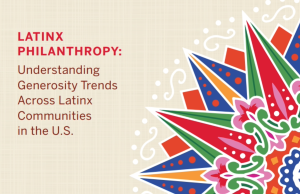Billions of dollars in donations by MacKenzie Scott and her husband, Dan Jewett, to 500 nonprofits during the past 12 months have been lauded not only for their transformative size but the unrestricted nature of the contributions. Now new research suggests that donor-restricted gifts have a negative impact on charities.
“Service Delivery Under Pressure: Effects of donor-imposed financial restrictions,” by ChiaKo Hung and Jessica Berrett, used a sample of national arts and culture nonprofits in the United States from 2011 to 2018. Nonprofits were located in 49 states, however, most were located in 13 states and Washington, D.C.
The 23-page paper examined effects donor-imposed financial restrictions have on program outputs and whether the effect varies according to different levels of temporary or permanent donor-imposed restrictions. Results indicate a negative relationship between financial restrictions and program outputs.
The authors wrote: “We find that donor-imposed financial restrictions hinder nonprofit service delivery. We also find that the relationship turns more negative when financial restrictions are mostly derived from permanently restricted donations.”
The authors continued: “When most of the donations are permanently restricted, the relationship is mostly negative but turns more positive when the proportion of temporarily restricted donations increases.”
The negative relationships between restricted donations and program outputs “are mostly derived from permanently restricted donations. This may be due to the relative size of these donations and that they are typically restricted in perpetuity, leaving little flexibility to the organization,” according to the authors.
Hung is an assistant professor of nonprofit management and public administration at the University of Hawai’i at Mãnoa. Barrett is an assistant professor in the School of Public Affairs at the University of Colorado, Colorado Springs. As a third-year doctoral candidate, Berrett co-authored a paper, “Toward a valid approach to nonprofit efficiency measurement,” with Jason Coupet, an assistant professor in the department of public administration at North Carolina State University. The two appeared on Fresh Research, a podcast by The NonProfit Times, in 2018 to discuss that paper.
Temporarily restricted donations typically require that the funds be spent after a specific time and/or for a particular purpose whereas permanently restricted donations might come in the form of a building, land, artwork, or be invested into an endowment in which often the principal stays intact and only the interest earned is used by the organization.
If a large donation is placed in an endowment to be used for a particular program, the benefits will most likely be small and incremental over a long period of time, data in the study showed. Temporarily restricted donations will be used for specific programs or eventually be released and have a more immediate impact on a nonprofit such as increased outputs, the authors noted.
If a large portion of an organization’s funding is permanently restricted for a particular program use, the organization might be starved of critical administrative expenses, unable to run as many programs or events or unable to advertise or promote programming, causing a decline in attendance. If too much funding is restricted and designated for program use only, the organization might not have enough to put toward fundraising expenses, according to the authors. To make money, organizations need to spend money, and organizations in this case may not be able to raise enough money to support programs and events, or be unable to invest in critical infrastructure that makes venues or facilities attractive to potential attendees, it was noted in the paper.










